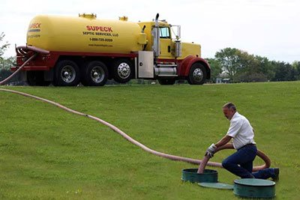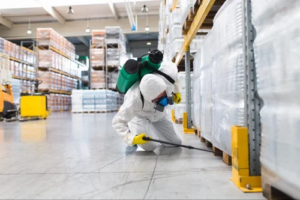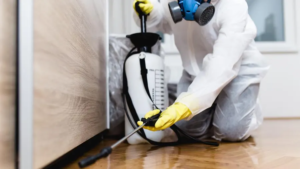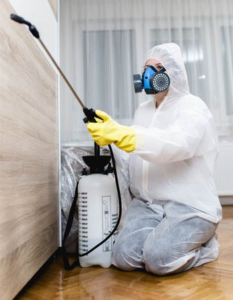Electricians install, repair, and maintain power, lighting, communications, and control systems for homes, businesses, and industrial facilities. They also ensure that all electrical work meets safety standards.
If you are interested in a career as an electrician, consider starting with an apprenticeship program. There are union and non-union programs, as well as college courses that can prepare you for this role. Contact Nash Electric LLC now!

Becoming a professional Electrician requires the right combination of training and experience. You’ll need to learn how to install, maintain, and repair electrical wiring systems for commercial, industrial, and residential projects. These projects may include the installation of lighting, fire protection systems, and data networks. You’ll also need to build and service electrical power systems, including motors and transformers.
The training you need to become a licensed electrician is typically a combination of a vocational school program and an apprenticeship. Vocational schools often offer certificate programs that can be completed in a year or less, while apprenticeships are usually four to five years long. Both programs will cover topics such as blueprint reading, residential wiring, and trade mathematics. Many vocational schools will also provide hands-on experiences that will give you the opportunity to work with different types of materials and tools.
In addition to your technical skills, it’s important to have good customer communications. You’ll need to be able to listen to customers and explain their ideas in a way they can understand, as well as manage their expectations throughout the project. This requires excellent people and communication skills, as well as a solid understanding of maths and physics.
After completing your electrician training, you can seek employment with a general construction company or start your own contracting electrical business. If you choose to become an independent contractor, you’ll need to acquire a license from the state of New York. To do so, you’ll need to take a written and practical exam. In addition to the license, you’ll also need to obtain personal and professional liability insurance and workers’ compensation insurance.
If you’re interested in becoming a licensed electrician, you can find many programs online and at local vocational schools or community colleges. You can also request enrollment information from apprenticeship programs offered by unions or reputable training committees. Be sure to look for programs that are accredited and offer financial aid to those who need it. In addition, it’s important to choose an apprenticeship that offers a good learning environment and offers job placement assistance upon completion.
Licensing
Some states have state licensing requirements for electricians, but in most cases, the license process is handled by local electrical boards. Generally, you will need to pass a state exam and have work experience, but the exact details of these requirements vary by municipality. Some states exempt certain types of electrical work from licensing requirements, and others require a license even for basic wiring projects.
Trade schools and apprenticeships are the most common ways to get the on-the-job training you need to become a licensed electrician. These programs provide both classroom instruction and hands-on learning in the field. The type of training you choose will depend on your preferences and the specific skills you need to learn for the job. Trade schools are best for those who want formal, structured learning. Apprenticeships are available through union-sanctioned programs sponsored by the International Brotherhood of Electrical Workers and National Electrical Contractors Association under the Electrical Training Alliance. They can also be arranged through private electrical contractors or non-union trade organizations.
Once you have finished your apprenticeship, you need to complete a state-approved licensing examination to become a journeyman electrician. The examination details vary by state, but they usually include questions on the National Electrical Code, general electrical safety protocols, and math and science concepts. Many state licensing bodies also require you to have a high school diploma or GED certificate and be in good physical condition.
After passing the state exam, you must register as a New York electrician. You must also submit proof that you have liability insurance and workers’ compensation insurance, and you may be required to pass a criminal background check. Additionally, if you will be working on residential or commercial projects in which you will be responsible for installing, repairing, or altering electrical systems, you must have a license from the Department of Buildings.
Electricians can also earn national certifications in specialties such as cable splicing, instrumentation, and more. These credentials can help you stand out to potential employers and increase your earning potential. Keeping up with continuing education and industry trends can also help you maintain your career prospects.
Experience
Electricians acquire a number of skills during their apprenticeship, including technical knowledge of electrical systems, circuits and codes. They also develop problem-solving abilities and attention to detail that are useful in careers like facilities management, electrical engineering or technical sales. Finally, their experience working in an environment that requires rigorous adherence to safety protocols prepares them for roles in construction management and industrial maintenance.
Whether they’re collaborating with other electricians or with clients, excellent communication is essential. According to the International Brotherhood of Electrical Workers, the ability to effectively relay technical information in an understandable manner is important for ensuring that projects are completed correctly. It’s also vital for establishing trust and building long-term relationships with clients.
In addition to excellent communication, electricians must have a high degree of manual dexterity to operate tools and equipment safely and efficiently. They also need to have physical stamina to stand or crouch for extended periods while performing tasks. Additionally, electricians must be flexible to adjust their schedules based on the demands of each job and to work in a variety of environments.
Because electrical technology is always evolving, electricians must keep up with advancements and continue to improve their skillset. Continuing education programs can help them stay abreast of new technology, codes and safety practices. Keeping their certifications up-to-date helps them stay competitive in the job market and provides opportunities for career growth. Moreover, working with an experienced staffing agency like Randstad can help electricians find temporary jobs that provide the necessary training and experience to advance in their careers. Many of these temporary assignments lead to permanent positions with top employers.
Skills
Electricians use a variety of tools, including power tools and hand tools. They must be proficient in using these tools and have excellent analytical and problem-solving skills to identify electrical issues and make repairs. They also need to have a strong knowledge of electrical systems and wiring, including the ability to read blueprints and technical diagrams.
Electrical contractors and electricians must be able to communicate effectively with clients, supervisors, and team members. They need to be able to explain complex technical information in simple terms and listen carefully to understand customer needs. This communication skill is essential for ensuring client satisfaction and fostering a productive work environment.
Exceptional customer service is another skill that sets apart a skilled electrician. This is especially important if an electrician works independently and must connect with customers to schedule appointments or make repair calls. Good customer service skills can help an electrician develop a loyal following and grow their business.
In addition to these soft skills, electricians need to be able to follow directions and work efficiently under tight deadlines. They should also be able to manage multiple tasks simultaneously and prioritize them based on importance. As the electric industry continues to evolve, electricians must be willing to adapt to new methods and technologies. This flexibility is a necessary part of being a successful electrician in 2024.
Physical endurance is also a must for this job. In addition to working with tools, electricians often must climb ladders and crawl into tight spaces. They may also need to stand or kneel for long periods of time. This requires a high level of physical fitness, as well as the ability to safely operate construction equipment and vehicles.
Electricians must be able to read and interpret blueprints, building plans, and specifications for installing electrical wiring and equipment. They must also be familiar with the National Electrical Code (NEC) to ensure that all their work meets safety standards and complies with regulatory requirements. To stay relevant in this field, electricians should regularly seek opportunities to expand their knowledge of the latest tools and techniques by participating in continuing education courses or networking with colleagues.








